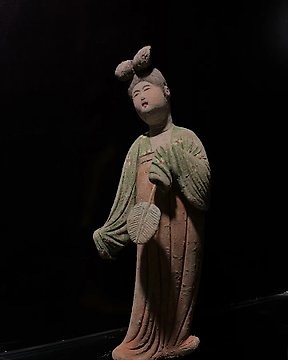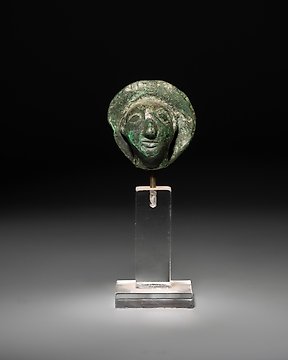Fast shipping perfect packaging the earring is gorgeous !! Everything perfect! Thank you very much
Vertaling bekijkenThank you for the nice feedback, enjoy your beautiful piece!
Catawiki is voortdurend bezig om haar technologie te verbeteren. Je gebruikt momenteel een verouderde browser. Update je browser om je gebruikservaring te optimaliseren.
Je kunt je cookievoorkeuren instellen met de onderstaande schakelaars. Je kunt je voorkeuren bijwerken, je toestemming op elk moment intrekken en een gedetailleerde beschrijving bekijken van de soorten cookies die wij en onze partners gebruiken in ons Cookiebeleid.
Nr. 85653281



Step into the world of ancient Egypt with this remarkable Bronze Harpokrates Statue, a piece that encapsulates the religious beliefs and artistic achievements of the Ptolemaic period, circa 332 to 30 BCE. Harpokrates, known as "Her-pa-khered" in Egyptian, translating to "Horus the Child," is depicted in this leaded bronze figurine with the innocence and charm befitting a deity revered across centuries.
The child god sits in a timeless posture of youth and divinity—legs bent, feet firmly set upon a rectangular plinth, embodying the god of silence with his characteristic gesture of a finger to his lips. This silent language speaks volumes about ancient Egyptian iconography, where gods were often portrayed in their infant form, symbolizing a purer, more potent form of their divine power. Such depictions were commonplace from the Third Intermediate Period through to Greco-Roman times, indicating a cultural preference for the youthful over the adult in divine representations.
The detailed craftsmanship of this statue is evident in Harpokrates' youthful features—almond eyes, a slight smile, and the traditional curled sidelock of youth, indicative of royal lineage. Adorning his head is the nemes headcloth, complete with frontal lappets and a uraeus symbolizing kingship. The hemhem crown, an ornate and elaborate headdress, crowns the deity, reflecting the amalgamation of Egyptian and Hellenistic cultural influences during the Ptolemaic dynasty.
This small yet powerful figurine, measuring 0.8" W x 2.6" H (2 cm x 6.6 cm) and standing 3.6" H (9.1 cm) on its custom stand, was likely created as a temple votive. Devotees believed that such effigies of child gods harbored a higher concentration of divine power, making them potent mediums for prayer and protection against malignant forces.
The significance of Harpokrates extends beyond his mythological role; he is a symbol of the enduring legacy of Egyptian religion, as referenced in classical literature by authors such as Pseudo-Hyginus and Ovid. The timeless nature of this piece is further affirmed by its condition, which, despite some loss and surface wear, remains mostly intact. The patina that graces its surface adds to its authenticity, telling a story of its ancient past.
Provenance is key in the journey of this artifact, once part of the collection of Dr. W. Benson Harer in Los Angeles and previously owned by the noted antiquarian Philip Mitry in Egypt before 1951. Such esteemed ownership adds layers of historical and cultural context to this piece, enhancing its allure to collectors and historians alike.
This Egyptian Bronze Harpokrates Statue is not only a work of art but also a vessel of the past, offering a direct link to the spiritual world of ancient Egypt. Accompanied by a Certificate of Authenticity, this artifact stands as a testament to the Ptolemaic era's artistic and religious fervor, making it a profound addition to any collection.
Visual Analysis:
The Egyptian Bronze Harpokrates Statue is a distinguished representation of ancient craftsmanship. The child god's pose, with the right hand to the mouth, is iconic for Harpokrates, symbolizing silence and secrecy. The hemhem crown is particularly notable, as it is less commonly depicted, making this figure quite rare. This crown, along with the uraeus and nemes, suggests a combination of royal and divine significance, pointing to Harpokrates' role as a protector deity. The detailed facial features and sidelock also add to the statue's authenticity and value, reflecting the Ptolemaic period's artistry. The combination of these elements, along with the statue's provenance, contributes to its rarity and desirability as an artifact.
Step into the world of ancient Egypt with this remarkable Bronze Harpokrates Statue, a piece that encapsulates the religious beliefs and artistic achievements of the Ptolemaic period, circa 332 to 30 BCE. Harpokrates, known as "Her-pa-khered" in Egyptian, translating to "Horus the Child," is depicted in this leaded bronze figurine with the innocence and charm befitting a deity revered across centuries.
The child god sits in a timeless posture of youth and divinity—legs bent, feet firmly set upon a rectangular plinth, embodying the god of silence with his characteristic gesture of a finger to his lips. This silent language speaks volumes about ancient Egyptian iconography, where gods were often portrayed in their infant form, symbolizing a purer, more potent form of their divine power. Such depictions were commonplace from the Third Intermediate Period through to Greco-Roman times, indicating a cultural preference for the youthful over the adult in divine representations.
The detailed craftsmanship of this statue is evident in Harpokrates' youthful features—almond eyes, a slight smile, and the traditional curled sidelock of youth, indicative of royal lineage. Adorning his head is the nemes headcloth, complete with frontal lappets and a uraeus symbolizing kingship. The hemhem crown, an ornate and elaborate headdress, crowns the deity, reflecting the amalgamation of Egyptian and Hellenistic cultural influences during the Ptolemaic dynasty.
This small yet powerful figurine, measuring 0.8" W x 2.6" H (2 cm x 6.6 cm) and standing 3.6" H (9.1 cm) on its custom stand, was likely created as a temple votive. Devotees believed that such effigies of child gods harbored a higher concentration of divine power, making them potent mediums for prayer and protection against malignant forces.
The significance of Harpokrates extends beyond his mythological role; he is a symbol of the enduring legacy of Egyptian religion, as referenced in classical literature by authors such as Pseudo-Hyginus and Ovid. The timeless nature of this piece is further affirmed by its condition, which, despite some loss and surface wear, remains mostly intact. The patina that graces its surface adds to its authenticity, telling a story of its ancient past.
Provenance is key in the journey of this artifact, once part of the collection of Dr. W. Benson Harer in Los Angeles and previously owned by the noted antiquarian Philip Mitry in Egypt before 1951. Such esteemed ownership adds layers of historical and cultural context to this piece, enhancing its allure to collectors and historians alike.
This Egyptian Bronze Harpokrates Statue is not only a work of art but also a vessel of the past, offering a direct link to the spiritual world of ancient Egypt. Accompanied by a Certificate of Authenticity, this artifact stands as a testament to the Ptolemaic era's artistic and religious fervor, making it a profound addition to any collection.
Visual Analysis:
The Egyptian Bronze Harpokrates Statue is a distinguished representation of ancient craftsmanship. The child god's pose, with the right hand to the mouth, is iconic for Harpokrates, symbolizing silence and secrecy. The hemhem crown is particularly notable, as it is less commonly depicted, making this figure quite rare. This crown, along with the uraeus and nemes, suggests a combination of royal and divine significance, pointing to Harpokrates' role as a protector deity. The detailed facial features and sidelock also add to the statue's authenticity and value, reflecting the Ptolemaic period's artistry. The combination of these elements, along with the statue's provenance, contributes to its rarity and desirability as an artifact.
Fast shipping perfect packaging the earring is gorgeous !! Everything perfect! Thank you very much
Vertaling bekijkenThank you for the nice feedback, enjoy your beautiful piece!
Zeer zorgvuldig verzonden in mooie ringendoosjes. Dank!
Vertaling bekijkenGraag gedaan en veel plezier met deze prachtige ringen!
ottimo servizio arrivato tutto perfetto
Vertaling bekijkengrazie per la reazione positiva!
Très bel objet. Bien emballé et rapidement livré. Accompagné des documents nécessaires (coa, invoice). Je suis très satisfait et recommande ce vendeur.
Vertaling bekijkenThank you for the positive reply and enjoy this great addition to your collection!
Very Nice . Fast shipping. Thank you.
Vertaling bekijkenYou're welcome and thank you for selecting this fine piece to be part of your collection!
Das ist eine unglaubliche Objekt Ich danke Ihnen vielmals für Verkauf Alles sehr gut gegangen Danke
Vertaling bekijkenVielen Dank für Ihren Kauf und wir wünschen Ihnen viel Glück mit dieser feinen Ergänzung zu Ihrer Sammlung!
Fast shipping perfect packaging the earring is gorgeous !! Everything perfect! Thank you very much
Vertaling bekijkenThank you for the nice feedback, enjoy your beautiful piece!









